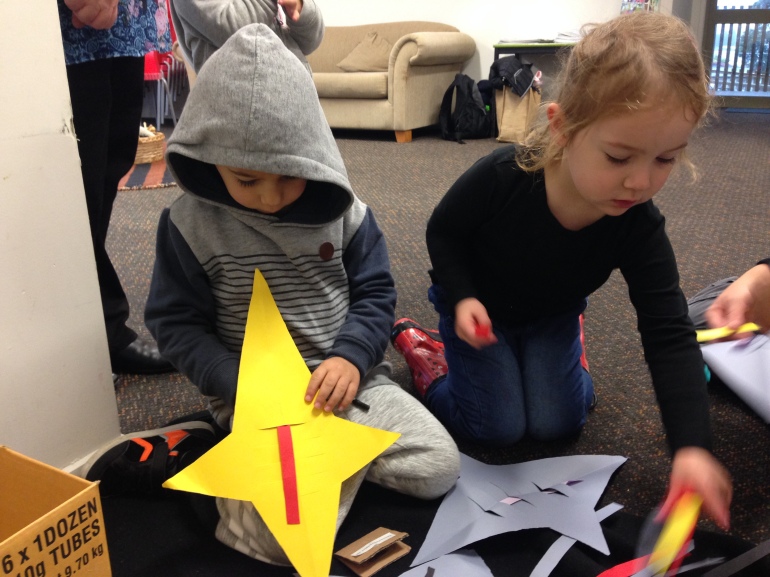News And Events

Matariki
18 June 2018At Nurtured at Home playgroups throughout June, we've been celebrating Matariki with a variety of activites. Here are some that you can also do at home:
A tradition of storytelling: Matariki is a great time to encourage children to tell the stories of where they live, what is special to them, and who the people are in their whānau. Educators can document this story using the child’s own words, so that the story can be retold and shared with others.
Acknowledging whānau: Matariki is a great time to celebrate whānau. We can celebrate whānau by acknowledging their skills and creating a star for them. With the help of the Educator, children can create a star for each whānau member, decorate it, and write on it what the child thinks they are good at. For example, sister might be really good at touch rugby and brother might be good at making bread. A nice contribution is for the parents to create a star for their child and write on what they acknowledge their child is good at. All of the stars can be displayed to create a twinkling night sky.
Growing: We can celebrate Matariki with whānau by growing our own kūmara sprouts and giving them away as gifts. Lay your kūmara in damp sand, or suspend it in a jar of water using toothpicks. Keep in a warm place. After a couple of weeks, you will notice shoots growing off the kūmara. When the shoots are about 10 centimetres long, pull them away from the original vegetable. Plant your kūmara in yoghurt pottles and water them well.
Providing food: Matariki is a time to celebrate the food that is grown and offered for nourishment. We can celebrate this with children in care by making vegetable soup together.
Here's some further information about Matariki:
Twinkling in the winter sky just before dawn, Matariki (the Pleiades) signals the Māori New Year. For 2018, June 7th is listed as the day that Matariki sets and July 6th-9th as the rising, which is when you can see Matariki just above the horizon before the sun comes up. Traditionally, Matariki was a time to remember those who had died in the last year. But it was also a happy event – crops had been harvested and seafood and birds had been collected. With plenty of food in the storehouses, Matariki was a time for singing, dancing and feasting.
Matariki, or Māori New Year celebrations were once popular, but stopped in the 1940’s. In 2000, they were revived. Only a few people took part at first, but in just a few years thousands were honouring the ‘New Zealand Thanksgiving’. A special feature of Matariki celebrations is the flying of kites – according to ancient custom, they flutter close to the stars.
Matariki literally means the ‘eyes of god’ (mata ariki) or ‘little eyes’ (mata riki). According to myth, when Ranginui, the sky father, and Papatūānuku, the earth mother, were separated by their children, the god of the winds, Tāwhirimātea, became so angry that he tore out his eyes and threw them into the heavens.
Information from www.teara.govt.nz


